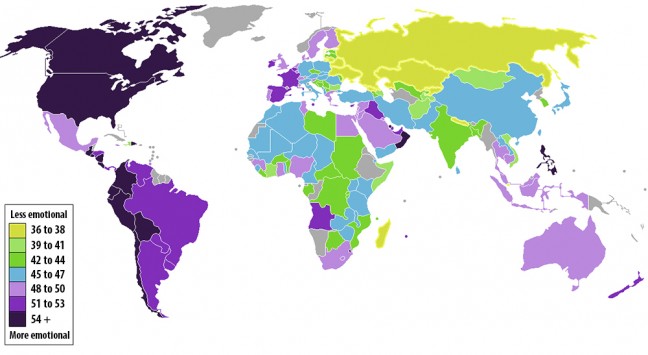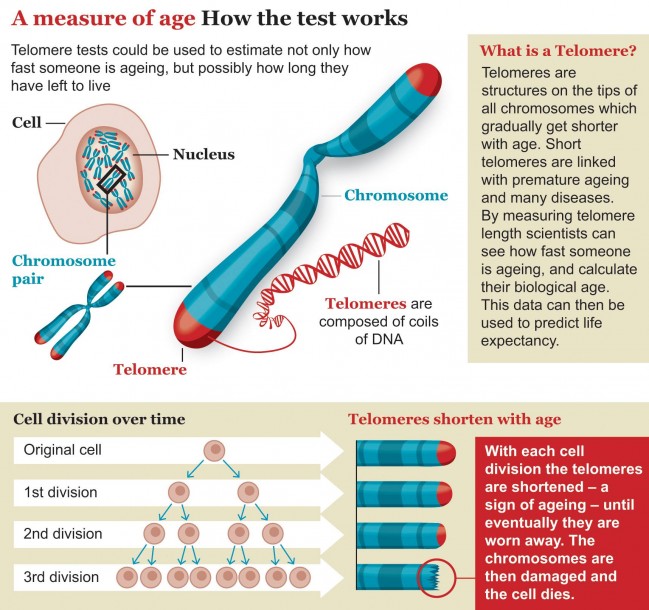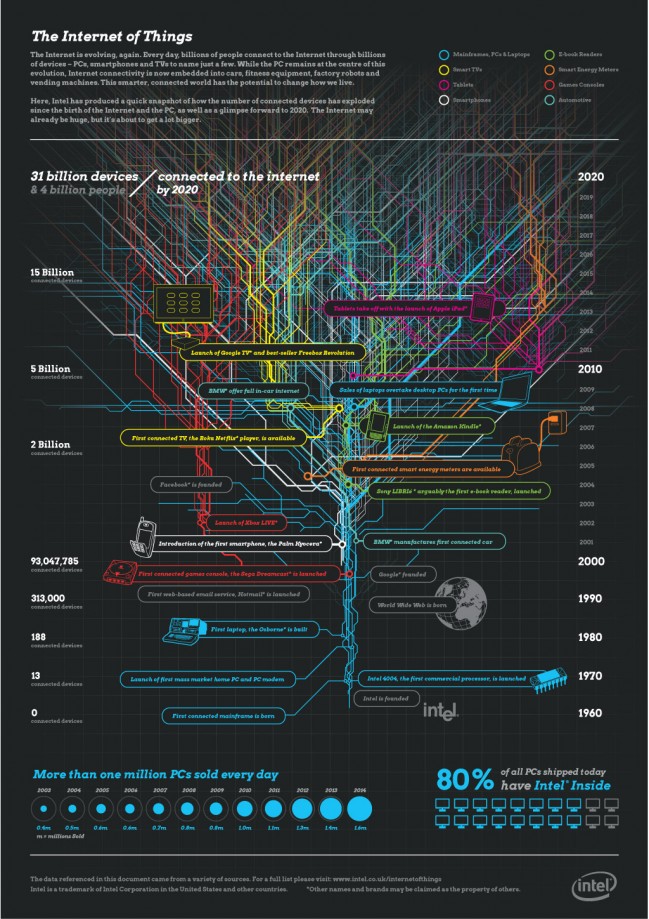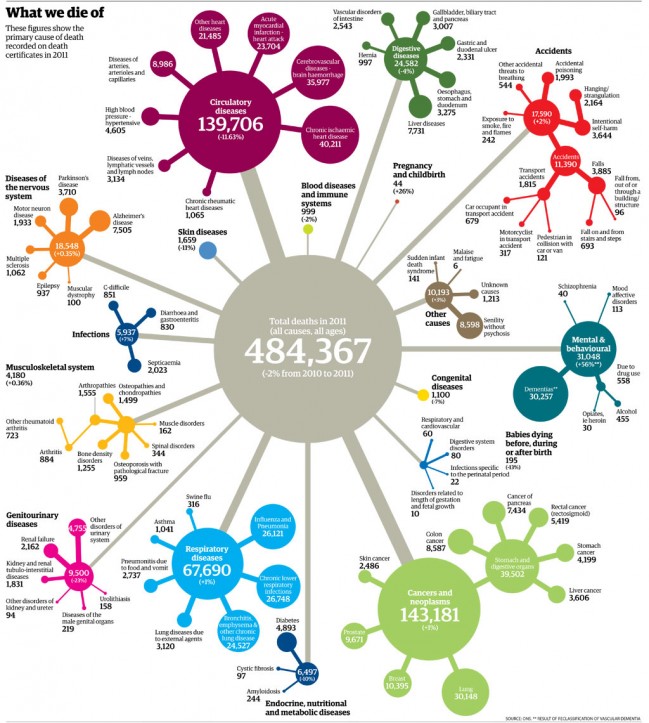 The little space probe that could — Voyager I — is close to leaving our solar system and entering the relative void of interstellar space. As it does so, from a distance of around 18.4 billion kilometers (today), it continues to send back signals of what it finds. And, surprises continue.
The little space probe that could — Voyager I — is close to leaving our solar system and entering the relative void of interstellar space. As it does so, from a distance of around 18.4 billion kilometers (today), it continues to send back signals of what it finds. And, surprises continue.
[div class=attrib]From ars technica:[end-div]
Several years ago the Voyager spacecraft neared the edge of the Solar System, where the solar wind and magnetic field started to be influenced by the pressure from the interstellar medium that surrounds them. But the expected breakthrough to interstellar space appeared to be indefinitely put on hold; instead, the particles and magnetic field lines in the area seemed to be sending mixed signals about the Voyagers’ escape. At today’s meeting of the American Geophysical Union, scientists offered an explanation: the durable spacecraft ran into a region that nobody predicted.
The Voyager probes were sent on a grand tour of the outer planets over 35 years ago. After a series of staggeringly successful visits to the planets, the probes shot out beyond the most distant of them toward the edges of the Solar System. Scientists expected that as they neared the edge, we’d see the charge particles of the solar wind changing direction as the interstellar medium alters the direction of the Sun’s magnetic field. But while some aspects of the Voyager’s environment have changed, we’ve not seen any clear indication that it has left the Solar System. The solar wind actually seems to be grinding to a halt.
Today’s announcement clarifies that the confusion was caused by the fact that nature didn’t think much of physicists’ expectations. Instead, there’s an additional region near our Solar System’s boundary that hadn’t been predicted.
Within the Solar System, the environment is dominated by the solar magnetic field and a flow of charged particles sent out by the Sun (called the solar wind). Interstellar space has its own flow of particles in the form of low-energy cosmic rays, which the Sun’s magnetic field deflects away from us. There’s also an interstellar magnetic field with field lines oriented in different directions to our Sun’s.
Researchers expected the Voyagers would reach a relatively clear boundary between the Solar System and interstellar space. The Sun’s magnetic field would first shift directions, then be left behind and the interstellar one would be detected. At the same time, we’d see the loss of the solar wind and start seeing the first low-energy cosmic rays.
As expected, a few years back, the Voyagers reached a region where the interstellar medium forced the Sun’s magnetic field lines to curve north. But the solar wind refused to follow suit. Instead of flowing north, the solar wind slowed to a halt while the cosmic rays were missing in action.
Over the summer, as Voyager 1 approached 122 astronomical units from the Sun, that started to change. Arik Posner of the Voyager team said that, starting in late July, Voyager 1 detected a sudden drop in the presence of particles from the solar wind, which went down by half. At the same time, the first low-energy cosmic rays filtered in. A few days later things returned to normal. A second drop occurred on August 15 and then, on August 28, things underwent a permanent shift. According to Tom Krimigis, particles originating from the Sun dropped by about 1,000-fold. Low-energy cosmic rays rose and stayed elevated.
[div class=attrib]Read the entire article following the jump.[end-div]
[div class=attrib]Image: Voyager II. Courtesy of NASA / JPL.[end-div]


 Despite what seems to be an overwhelmingly digital shift in our lives, we still live in a world of steam. Steam plays a vital role in generating most of the world’s electricity, steam heats our buildings (especially if you live in New York City), steam sterilizes our medical supplies.
Despite what seems to be an overwhelmingly digital shift in our lives, we still live in a world of steam. Steam plays a vital role in generating most of the world’s electricity, steam heats our buildings (especially if you live in New York City), steam sterilizes our medical supplies.
 Brooke Allen reviews a handy new tome for those who live in comfort and safety but who perceive threats large and small from all crevices and all angles. Paradoxically, most people in the West are generally safer than any previous generations, and yet they imagine existential threats ranging from viral pandemics to hemispheric mega-storms.
Brooke Allen reviews a handy new tome for those who live in comfort and safety but who perceive threats large and small from all crevices and all angles. Paradoxically, most people in the West are generally safer than any previous generations, and yet they imagine existential threats ranging from viral pandemics to hemispheric mega-storms.

 One of our favorite thinkers (and authors) here at theDiagonal is Nassim Taleb. His new work entitled Antifragile expands on ideas that he first described in his bestseller Black Swan.
One of our favorite thinkers (and authors) here at theDiagonal is Nassim Taleb. His new work entitled Antifragile expands on ideas that he first described in his bestseller Black Swan.

 Starting up a new business was once a demanding and complex process, often undertaken in anonymity in the long shadows between the hours of a regular job. It still is over course. However nowadays “the startup” has become more of an event. The tech sector has raised this to a fine art by spawning an entire self-sustaining and self-promoting industry around startups.
Starting up a new business was once a demanding and complex process, often undertaken in anonymity in the long shadows between the hours of a regular job. It still is over course. However nowadays “the startup” has become more of an event. The tech sector has raised this to a fine art by spawning an entire self-sustaining and self-promoting industry around startups.
 Why study the science of climate change when you can study the complexities of climate change deniers themselves? That was the question that led several groups of independent researchers to study why some groups of people cling to mistaken beliefs and hold inaccurate views of the public consensus.
Why study the science of climate change when you can study the complexities of climate change deniers themselves? That was the question that led several groups of independent researchers to study why some groups of people cling to mistaken beliefs and hold inaccurate views of the public consensus.
 Expanding on the work of Immanuel Kant in the late 18th century, German philosopher Georg Wilhelm Friedrich Hegel laid the foundations for what would later become two opposing political systems, socialism and free market capitalism. His comprehensive framework of Absolute Idealism influenced numerous philosophers and thinkers of all shades including Karl Marx and Ralph Waldo Emerson. While many thinkers later rounded on Hegel’s world view as nothing but a thinly veiled attempt to justify totalitarianism in his own nation, there is no argument as to the profound influence of his works on later thinkers from both the left and the right wings of the political spectrum.
Expanding on the work of Immanuel Kant in the late 18th century, German philosopher Georg Wilhelm Friedrich Hegel laid the foundations for what would later become two opposing political systems, socialism and free market capitalism. His comprehensive framework of Absolute Idealism influenced numerous philosophers and thinkers of all shades including Karl Marx and Ralph Waldo Emerson. While many thinkers later rounded on Hegel’s world view as nothing but a thinly veiled attempt to justify totalitarianism in his own nation, there is no argument as to the profound influence of his works on later thinkers from both the left and the right wings of the political spectrum.
 We all have owned or have used or have come far too close to a technology that we absolutely abhor and wish numerous curses upon its inventors. Said gizmo may be the unfathomable VCR, the forever lost TV remote, the tinny sounding Sony Walkman replete with unraveling cassette tape, the Blackberry, or even Facebook.
We all have owned or have used or have come far too close to a technology that we absolutely abhor and wish numerous curses upon its inventors. Said gizmo may be the unfathomable VCR, the forever lost TV remote, the tinny sounding Sony Walkman replete with unraveling cassette tape, the Blackberry, or even Facebook. British voters may recall Screaming Lord Sutch, 3rd Earl of Harrow, of the Official Monster Raving Loony Party, who ran in over 40 parliamentary elections during the 1980s and 90s. He never won, but garnered a respectable number of votes and many fans (he was also a musician).
British voters may recall Screaming Lord Sutch, 3rd Earl of Harrow, of the Official Monster Raving Loony Party, who ran in over 40 parliamentary elections during the 1980s and 90s. He never won, but garnered a respectable number of votes and many fans (he was also a musician).

 Auditory neuroscientist Seth Horowitz guides us through the science of hearing and listening in his new book, “The Universal Sense: How Hearing Shapes the Mind.” He clarifies the important distinction between attentive listening with the mind and the more passive act of hearing, and laments the many modern distractions that threaten our ability to listen effectively.
Auditory neuroscientist Seth Horowitz guides us through the science of hearing and listening in his new book, “The Universal Sense: How Hearing Shapes the Mind.” He clarifies the important distinction between attentive listening with the mind and the more passive act of hearing, and laments the many modern distractions that threaten our ability to listen effectively. With the election in the United States now decided, the dissection of the result is well underway. And, perhaps the biggest winner of all is the science of big data. Yes, mathematical analysis of vast quantities of demographic and polling data won over the voodoo proclamations and gut felt predictions of the punditocracy. Now, that’s a result truly worth celebrating.
With the election in the United States now decided, the dissection of the result is well underway. And, perhaps the biggest winner of all is the science of big data. Yes, mathematical analysis of vast quantities of demographic and polling data won over the voodoo proclamations and gut felt predictions of the punditocracy. Now, that’s a result truly worth celebrating. [div class=attrib]From the Wall Street Journal:[end-div]
[div class=attrib]From the Wall Street Journal:[end-div] Please forget Instagram, Photoshop filters, redeye elimination, automatic camera shake reduction systems and high dynamic range apps. If you’re a true photographer or simply a lover of great photography the choice is much simpler: black and white or color.
Please forget Instagram, Photoshop filters, redeye elimination, automatic camera shake reduction systems and high dynamic range apps. If you’re a true photographer or simply a lover of great photography the choice is much simpler: black and white or color.
